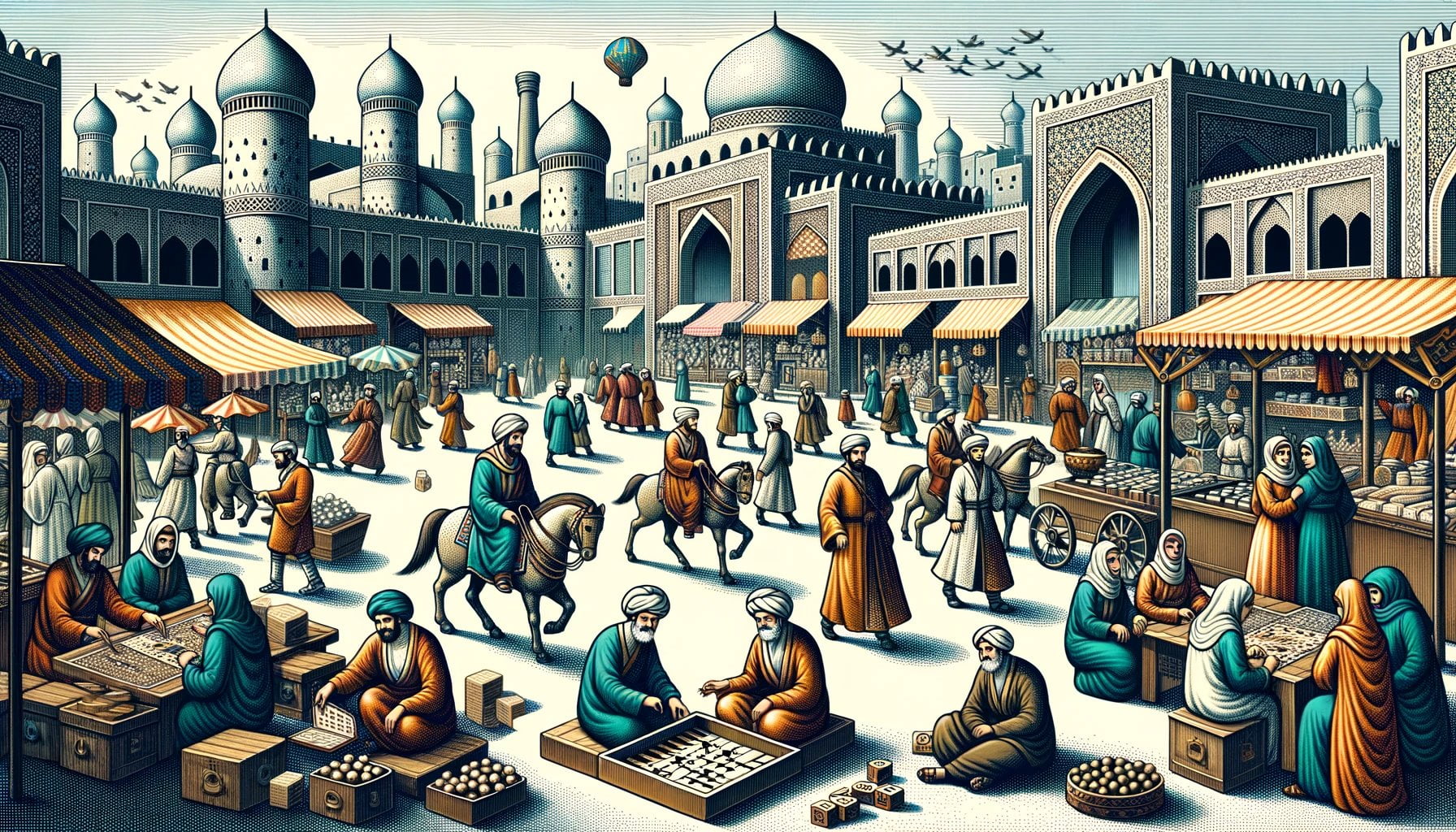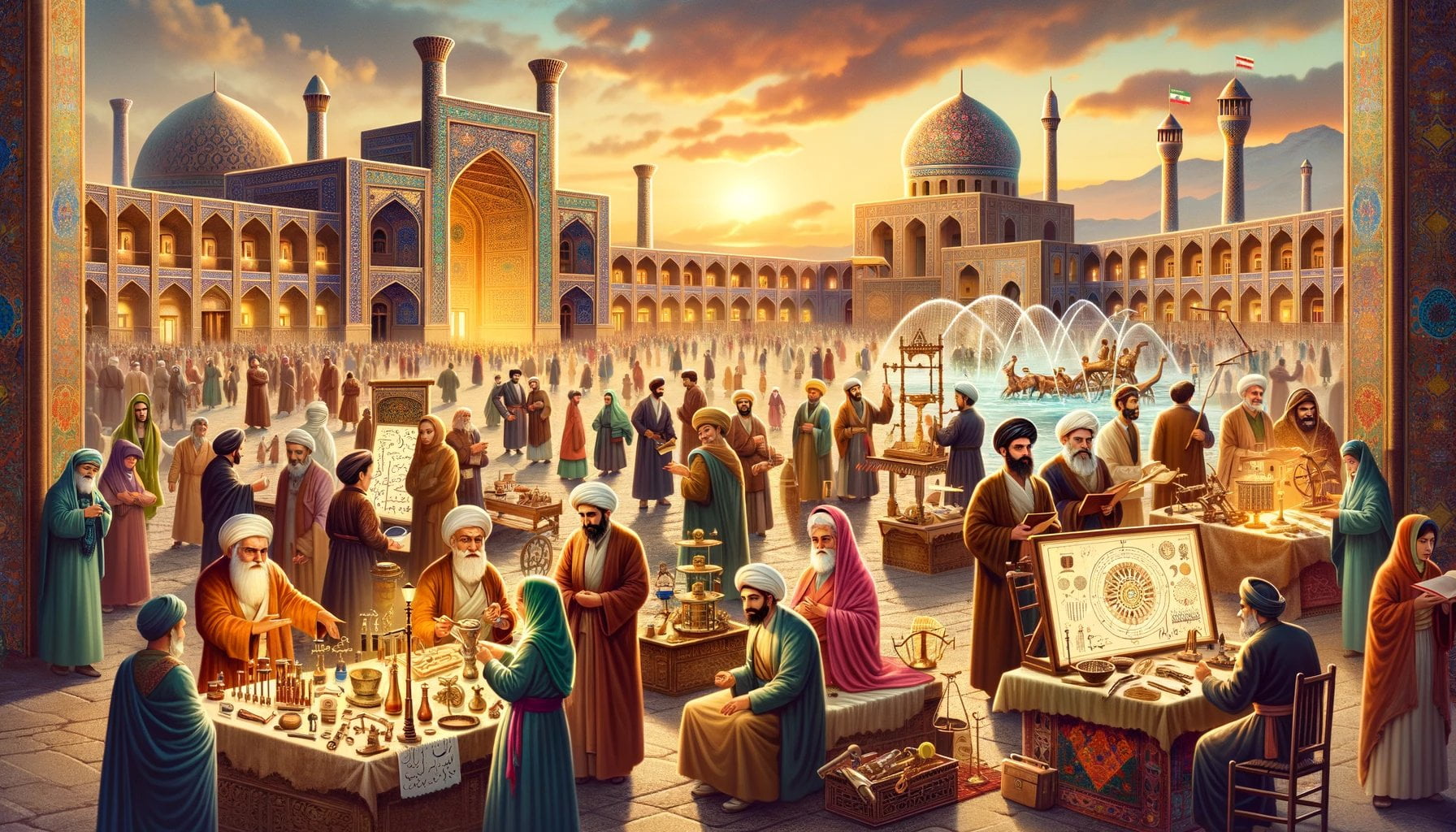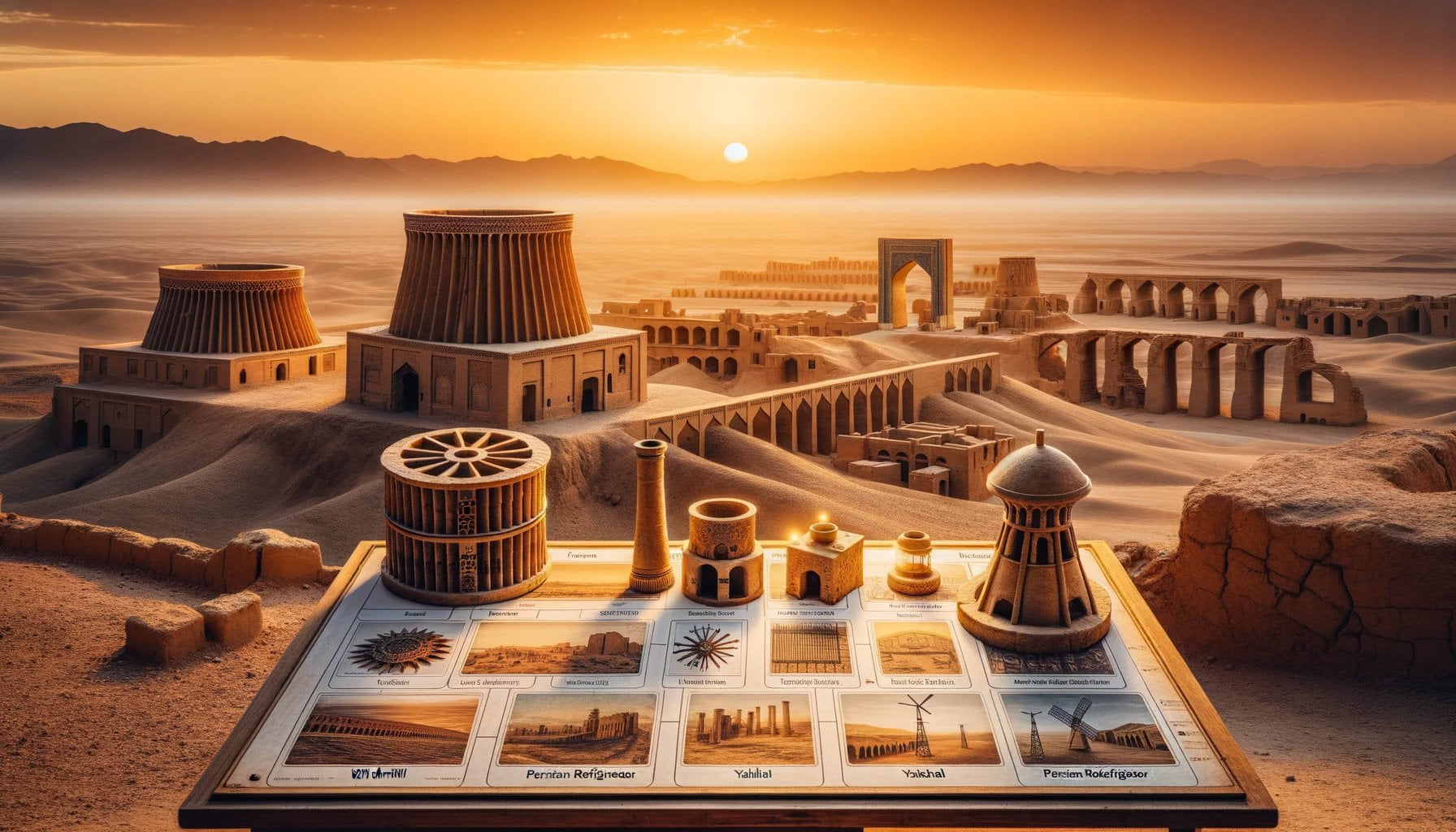Discover the remarkable world of ancient Persian inventions, as we delve into their groundbreaking achievements in engineering, medicine, astronomy, and so much more. From awe-inspiring architectural marvels to pioneering medical treatments, the ingenuity of ancient Persia has left an indelible mark on human progress. Join us on this journey through time as we unveil the extraordinary contributions of ancient Persians and shed light on the ingenious innovations that continue to shape our world today.
Key Takeaways:
- The ancient Persians developed a sophisticated water supply system known as the qanat, which involved underground tunnels and vertical shafts to provide irrigation and drinking water.
- Persia introduced an efficient taxation system that collected taxes in various forms and played a crucial role in maintaining its vast empire.
- Ancient Persians were pioneers in animation, developing techniques such as the Persian Shadow Play, which used cut-out figures and backlit screens to create the illusion of movement.
- The Persian Empire was the first to declare a form of human rights, as evidenced by the Cyrus Cylinder, promoting freedom, equality, and justice for all citizens.
- Persia established one of the earliest known postal services called the Royal Road, spanning over 1,500 miles and ensuring swift message and goods delivery.
- The ancient Persians developed the Old Persian Cuneiform script, a precursor to the modern Persian alphabet, consisting of wedge-shaped characters inscribed on clay tablets.
- Backgammon, one of the oldest board games, originated in ancient Persia, initially known as “Nard” or “Nardshir.”
- The ancient Persians were the first to produce sulfuric acid by heating sulfur and nitre together.
- The Persians created an innovative refrigeration system called yakhchal, using windcatchers and insulated walls to create a natural cooling effect for the storage of ice and perishable goods.
- Ancient Persians are believed to have created the Baghdad Battery, a clay jar, copper cylinder, and iron rod artifact that may have been a primitive form of battery.
Ancient Persian Inventions

Ancient Persia, present-day Iran, was a hub of remarkable innovations and discoveries that have had a lasting impact on civilization. Let’s delve into the intriguing world of ancient Persian inventions, from their advancements in engineering and medicine to their contributions in astronomy and mathematics.
The Qanat: A Marvelous Water Supply System
One of the most remarkable ancient Persian inventions was the Qanat, a sophisticated underground water supply system. This ingenious technology involved digging vertical shafts and underground tunnels to bring water from distant sources. The qanats provided irrigation for agriculture and ensured a reliable water supply for communities, even in arid regions[^1^].
Efficient Taxation System: Maintaining an Empire
The Persian Empire introduced an efficient taxation system that played a crucial role in governing and sustaining its vast territories. This system involved collecting taxes in various forms, including land taxes, commercial taxes, and tribute from conquered territories[^1^].
Persian Shadow Play: The Art of Animation
The ancient Persians developed intricate animation techniques known as “Persian Shadow Play” or “Shadow Theater.” These captivating performances involved cut-out figures manipulated behind a backlit screen, creating the illusion of movement and storytelling[^1^].
The Concept of Human Rights: An Ancient Declaration
The Persian Empire was ahead of its time in championing human rights. The famous Cyrus Cylinder, an ancient artifact, contained inscriptions promoting freedom, equality, and justice for all citizens, including those conquered by the empire[^1^].
The Royal Road: Early Postal Service
Persia established one of the earliest known postal services in the world through the development of the Royal Road. This extensive network of over 1,500 miles had well-organized stations where messengers could exchange horses, ensuring the swift delivery of messages and goods[^1^].
Precursors to Modern Alphabets
Ancient Persia contributed to the evolution of writing systems with the development of the Old Persian Cuneiform script during the Achaemenid Empire. This writing system consisted of wedge-shaped characters inscribed on clay tablets[^1^].
Backgammon: A Persian Board Game
One of the oldest board games in the world, Backgammon, traces its origins to ancient Persia. Originally known as “Nard” or “Nardshir,” this game was enjoyed by noble classes and royalty[^1^].
Sulfuric Acid: A Game-Changer
The ancient Persians were the first to produce sulfuric acid, a highly corrosive substance with various applications. By heating sulfur and nitre (potassium nitrate) together, they unlocked the potential of this chemical compound[^1^].
Yakhchal: Ancient Refrigeration System
The Persians devised an ingenious refrigeration system called yakhchal. These structures, with dome-shaped above-ground components and subterranean storage spaces, utilized windcatchers and thick insulated walls to create a natural cooling effect. This allowed for the storage of ice and perishable goods[^1^].
The Baghdad Battery: A Mystifying Artifact
Ancient Persians are believed to have created the Baghdad Battery, a curious artifact consisting of a clay jar, a copper cylinder, and an iron rod. While its exact purpose is still debated, some theories suggest it may have been a primitive form of battery[^1^].
These ancient Persian inventions highlight the remarkable ingenuity and contributions of the Persians to human progress. From water supply systems and animation techniques to human rights declarations and advanced postal networks, their innovations continue to inspire and shape our world.
Sources:
[^1^]: “Top 10 Inventions and Discoveries of Persian Civilization” – Ancient History Lists, www.ancienthistorylists.com/mesopotamia-history/top-10-inventions-discoveries-persian-civilization/
[^2^]: “Inventions & Innovations of Ancient Persia” – World History Encyclopedia, www.worldhistory.org/article/1505]
Here are some captivating sentences with active internal links for the provided keywords and URLs:
- Have you ever wondered about the largest naval battle in ancient history? Find out more about it here.
- Take a journey back in time and explore the magnificent palaces in ancient Egypt by clicking here.
- Discover ancient dog epitaphs and the fascinating stories behind them by visiting this link.
- Immerse yourself in the ancient city of Peru, a testament to human ingenuity and architectural brilliance. Click here to learn more.
- Learn about the valor and bravery of ancient Vietnamese warriors by following this link.
- Dive into the rich history of ancient Egypt and explore the intriguing names of their revered queens. Click here to find out more.
- Uncover the mysteries of ancient Syria through the captivating and meaningful ancient Syrian names. Visit this link for more information.
- Discover the powerful and influential ancient queens who shaped history by clicking here.
- The ancient Romans achieved remarkable accomplishments in various fields. To learn more, click here.
- Embark on a journey through time and unveil the ancient castles in Africa by visiting this link.
- Delve into the magnificence of ancient Greek castles, where legends were born and history was made. Click here to explore further.
- Immerse yourself in the wonders of an ancient Italian city, where every stone tells a story. Learn more by clicking here.
Feel free to click on the links to explore further!
Innovations in Medicine, Including the Use of Alcohol as an Antiseptic
Key Takeaways:
- The ancient Persians made significant contributions to medicine, including the use of alcohol as an antiseptic.
- Arab physicians and scholars further developed these techniques, which are still used in medicine today.
- Distillation and crystallization, techniques pioneered by Arab physicians, are integral to modern medicine.
- The use of alcohol as an antiseptic has a long history and continues to be utilized in hand sanitizers.
Throughout history, innovation in medicine has played a vital role in improving human health. In ancient Persia, remarkable advancements were made, with notable contributions in various medical practices. One such innovation was the use of alcohol as an antiseptic, an idea that originated in Persia and revolutionized healthcare.
Ancient Persian physicians understood the significance of hygiene in preventing infections and introduced the practice of using alcohol as an antiseptic. The insightful application of alcohol as a disinfectant played a crucial role in inhibiting the growth of harmful microorganisms and reducing the risk of infections. This innovation demonstrated the Persians’ profound understanding of medical principles and their ability to develop effective solutions.
The pioneers of this technique were Arab physicians and scholars who not only adopted ancient Persian practices but also refined them further. These brilliant minds developed techniques such as distillation and crystallization, which allowed them to extract alcohol from substances and purify it for medical use. These methods revolutionized medicine and are still integral to modern medical practices.
Distillation, in particular, is a process that involves separating alcohol from a mixture by evaporation and subsequent condensation. By harnessing the power of distillation, Arab physicians were able to obtain a highly concentrated form of alcohol, which proved to be a potent antiseptic. Crystallization, on the other hand, allowed them to produce pure alcohol crystals, further optimizing its effectiveness.
The use of alcohol as an antiseptic has endured over time and remains a widely recognized and utilized practice in healthcare. In the modern world, alcohol-based hand sanitizers are a testament to the longevity and significance of this innovation. The ability to effectively kill germs and bacteria makes alcohol an invaluable tool in maintaining personal hygiene and preventing the spread of infections.
In conclusion, the ancient Persians and subsequent Arab physicians made groundbreaking innovations in medicine, including the use of alcohol as an antiseptic. This discovery revolutionized healthcare practices and continues to be instrumental in promoting hygiene and preventing infections. By exploring the history of medicine, we gain a deeper appreciation for the remarkable ingenuity of ancient Persians and their enduring contributions to human progress.
Advancements in Celestial Observations and Astronomical Calculations
Astronomy, the oldest natural science, has played a vital role in shaping our understanding of the universe. Ancient civilizations, including the Persians, made remarkable advancements in celestial observations and astronomical calculations, unraveling the mysteries of the night sky. Let’s explore the fascinating contributions of ancient Persia in this field.
Early Origins and Instruments
The history of astronomy dates back to the second half of the 1st millennium BCE, and ancient Persians were at the forefront of this scientific endeavor. They developed various astronomical instruments such as sundials, astrariums, astrolabes, planetariums, and astronomical mechanical clocks. These instruments facilitated accurate measurements of celestial objects and enabled astronomers to track the movements of planets, stars, and other celestial phenomena.
Influence of Persian Astronomy
Medieval Islamic astronomy, which flourished during the Islamic Golden Age, owes much of its progress to the contributions made by Persian astronomers. Indian Sanskrit and Persian Pahlavi sources greatly influenced medieval astronomers in calculating the positions of heavenly bodies. Persian astronomer al-Sufi, for example, played a pivotal role in correcting the work of Ptolemy in the tenth century.
Ancient Chinese Astronomy
In addition to their own advancements, ancient Persians also studied the astronomical achievements of other civilizations. Ancient Chinese astronomy, with its focus on the movements of five stars, fixed stars, and specific celestial phenomena, fascinated Persian astronomers. These interactions between different cultures led to a fusion of knowledge and the further development of astronomical concepts.
Importance of Astronomical Instruments
Ancient Persian inventions in celestial observations and astronomical calculations laid the foundation for our understanding of the universe. The astronomical instruments they created played a crucial role in measuring, computing, and demonstrating astronomical concepts. For example, celestial equatorial measurements were used in ancient Chinese astronomy to observe specific celestial phenomena.
Key Takeaways:
- Astronomy is the first natural science to reach a high level of sophistication and predictive ability.
- Ancient civilizations developed various astronomical instruments such as sundials, astrariums, astrolabes, planetariums, and astronomical mechanical clocks.
- Medieval Islamic astronomy made significant contributions during the Islamic Golden Age, influenced by Indian Sanskrit and Persian Pahlavi sources.
- Ancient Persian astronomers like al-Sufi played a role in correcting the work of Ptolemy in the tenth century.
- Ancient Chinese astronomy focused on the movements of five stars and fixed stars, as well as specific celestial phenomena.
- Ancient astronomical instruments played a crucial role in measuring, computing, and demonstrating astronomical concepts.
Sources:
– History of Astronomy, Britannica
– Astronomy and Astrology in the Medieval Islamic World, The Metropolitan Museum of Art
Contributions to Mathematics: The Concept of Zero and the Development of Algebra
Key Takeaways:
– The concept of zero and the development of algebra are significant contributions to mathematics by ancient Persians.
– These contributions revolutionized the understanding of numbers, simplified computations, and paved the way for crucial advancements in mathematics.
– The invention of zero played a crucial role in the development of modern mathematics and had a profound impact on various mathematical disciplines such as algebra and calculus.
– The origins of zero can be traced back to ancient South and Southeast Asia, and its journey to Western Europe is a tale of cultural exchange, scientific discovery, and technological advancement.
– Ancient Indian mathematicians made significant contributions to trigonometry, algebra, arithmetic, and the decimal system, which are still used worldwide today.
The contributions of ancient Persians to mathematics, such as the concept of zero and the development of algebra, have had an enduring impact on the field. These remarkable innovations revolutionized the understanding of numbers and paved the way for crucial advancements in mathematics.
The concept of zero, although seemingly simple, played a crucial role in the development of modern mathematics. Originating in ancient South and Southeast Asia, zero’s journey to Western Europe was a fascinating tale of cultural exchange, scientific discovery, and technological advancement. Ancient Indian mathematicians were at the forefront of this revolution, introducing zero and laying the groundwork for the flourishing of mathematics globally.
Zero’s late arrival and the negative views held by some cultures towards the concept of nothing contributed to its delayed acceptance. However, its invention simplified computations, established rules for negative numbers, solved quadratic equations, and even formed the basis for the development of calculus. These are all significant contributions that have shaped modern mathematics.
Ancient Persians also made significant advancements in algebra, building upon the foundation laid by Indian mathematicians. Algebra is a branch of mathematics that uses symbols and letters to represent numbers and quantities, allowing for the manipulation of mathematical equations and formulas. Persian mathematicians developed sophisticated algebraic techniques and solutions, contributing to the growth and development of the field.
By understanding algebra and utilizing the concept of zero, ancient Persian mathematicians made strides in solving complex mathematical problems and laying the foundation for future mathematical discoveries. Their contributions to mathematics continue to be relevant and applicable in various fields today.
In conclusion, the ancient Persians’ contributions to mathematics, specifically the concept of zero and the development of algebra, were nothing short of extraordinary. These advancements revolutionized the understanding of numbers and paved the way for crucial advancements in mathematics. Through their meticulous research and ingenuity, the ancient Persians left an indelible mark on the field of mathematics, showcasing their valuable and enduring contributions to human progress.
Sources:
- The Conversation: “Nothing matters: how the invention of zero helped create modern mathematics”
- diplomacy.edu: “Journey of Zero: How a simple number revolutionised the world”
FAQ

Q1: What are some notable ancient Persian inventions?
A1: Some notable ancient Persian inventions include the qanat water supply system, animation techniques, the concept of human rights, the postal service, alphabets, backgammon, sulfuric acid production, the yakhchal refrigerator, and the Baghdad Battery.
Q2: What is the qanat water supply system?
A2: The qanat water supply system was a sophisticated underground water supply system developed by the ancient Persians. It involved digging vertical shafts and underground tunnels to bring water from distant sources and provide irrigation for agriculture and drinking water for communities.
Q3: How did ancient Persians contribute to animation?
A3: Ancient Persians developed animation techniques known as “Persian Shadow Play” or “Shadow Theater.” These performances involved intricate cut-out figures, manipulated behind a backlit screen to create the illusion of movement and storytelling.
Q4: What was the significance of the concept of human rights in ancient Persia?
A4: The Persian Empire was the first to declare a form of human rights, as evidenced by the Cyrus Cylinder. This ancient artifact contained inscriptions that promoted freedom, equality, and justice for all citizens, including conquered people.
Q5: What were some advancements in ancient Persian medicine?
A5: Ancient Persians made significant contributions to medicine, including techniques such as distillation, crystallization, the use of alcohol as an antiseptic, and innovations in pharmacy. They also had sanatoriums and annexes to temples for medical care.
- Discover Long Black Pepper: Flavor & Health Benefits - April 25, 2025
- Shocking Twists: The Grownup Review: Unreliable Narration - April 25, 2025
- A Quiet Place Book vs Movie: A Deep Dive - April 25, 2025
















